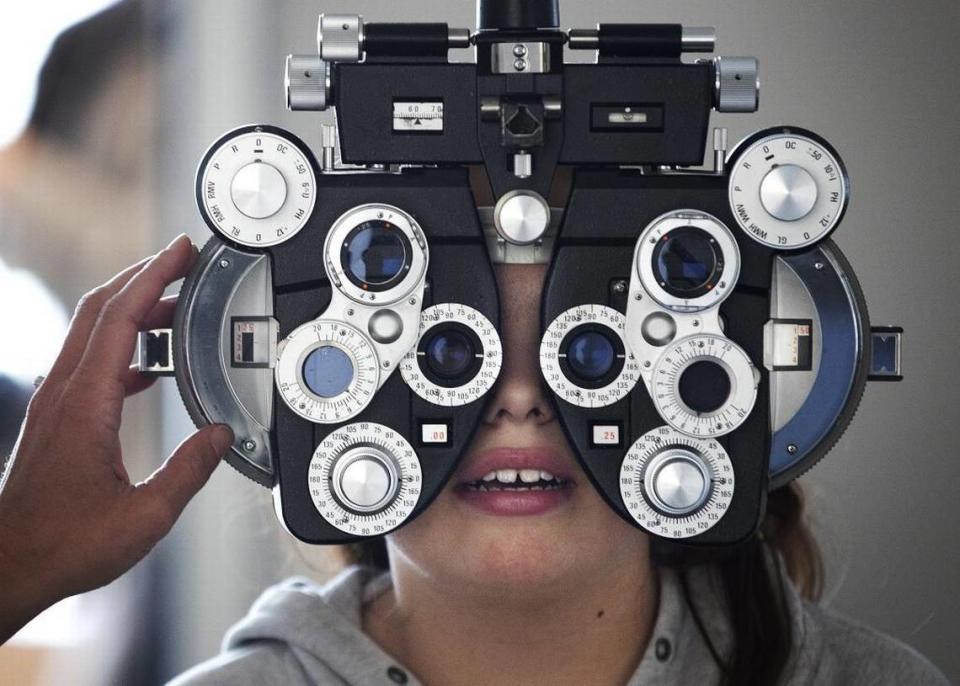Triangle eye doctors see vision issues rise. Is increased screen time to blame?
Myopia, or nearsightedness, is on the rise. According to the World Health Organization, half the global population could be nearsighted by 2050 — up from around 30% today.
In North Carolina’s Triangle area, eye experts say more children are dealing with the issue.
“Everyone has noticed that it seems like the kids are becoming nearsighted faster than they used to,” says Dr. Grace Prakalapakorn, a pediatric ophthalmologist at the Duke Eye Center.
A study last year by the California Institute of Behavioral Neurosciences and Psychology linked progression in youth nearsightedness to pandemic conditions. As COVID canceled activities and pushed school remote, children spent less time outside and more time staring at phone, tablet and computer screens.
While there’s a correlation between myopia and time spent looking at screens, the precise causes of increased nearsightedness are not definitive.
Myopia causes: screens and a lack of sun?
With myopia, the retina elongates in a way that causes objects to appear clear up close but blurry at a distance. It’s most commonly diagnosed during childhood as people’s bodies naturally grow.
Studies indicate sunlight might inhibit retina growth, Prakalapakorn explained, by stimulating “dopamine receptors in the retina.” Other local eye doctors confirmed there’s a strong link between vision and environment.
“The number one thing I tell parents is getting kids outside,” said Jennifer Lyerly, an optometrist who specializes in myopia control at TrueVision Eye Care in Raleigh. “It is super, super important. When you look at the clinical data, studies show if you can average between an hour and a half and two hours playing outside every single day, your child’s at a decreased risk of developing myopia.”

However, the average U.S. child spends hours inside and in front of screens each day, studies show. While its hard to ascertain how much time kids play outside, an often-cited 2015 University of Michigan study found American children between the ages of six and 17 experience seven minutes of unstructured play outside a day, half the amount recorded two decades ago.
There is nothing inherent in electronic screens that has been proven to cause major eye issues. Instead, studies suggest engaging in long periods of “near work” — staring at things closely (be it a tablet screen, phone or traditional book) can contribute to myopia, especially if children already have binocular vision issues that make it more difficult for their eyes to focus on close tasks. During the pandemic, kids likely performed greater amounts of near work as they pressed their faces to screens to attend class and complete assignments.
The 20-20-20 rule
To minimize eye strain, the American Academy of Ophthalmology recommends the 20-20-20 Rule: For every 20 minutes of starring at near distances, people should take a 20-second break and look at least 20 feet away.
Lyerly also highlighted research that links vision outcomes to sleep and genetics. She advised “early intervention” to reduce myopia progression and noted there are FDA-approved contact lenses to curb the condition.

Overall, she stressed it’s an oversimplification to blame mounting nearsightedness all on screens.
“It’s just so much more complicated than that,” Lyerly said. “My best advice for parents is to focus on increasing outdoor play time for kids and making sure they get regular eye exams so that any issues can be detected early.”
Open Source
Do you enjoy Triangle tech news? Subscribe to Open Source, The News & Observer's weekly technology newsletter and look for it in your inbox every Friday morning. Sign up here.
